Modern communications networks can be seen as big, evolving distributed databases full of context and information available from the
- Handheld, e.g., mobility and application information,
- Network, e.g., a base station’s current traffic load for all users, and
- Environment, e.g., predicted user trajectory provided by vehicular traffic management systems.
We have developed and incorporated novel knowledge extraction mechanisms and predictive analytics means over extremely large volumes of data to enhance decision-making process throughout the network. The extracted context information can be, for instance, used for
- Demand modelling: Establish an accurate QoS model according to the user’s predicted requests.
- Anticipatory buffering: Assure smooth media streaming by filling the play out buffer before a mobile user reaches a poorly covered area.
- Anticipatory handover: Avoid handover failures by including a coverage map in the decision.
- Anticipatory traffic offloading: Reduce cellular traffic load by postponing traffic until a user has reached an area covered by WLAN.
- Inter-cell scheduling: Allocate resources of multiple cells to a user
Publications
- M. Kasparick, R. L. G. Cavalcante, S. Valentin, S. Stanczak, and M. Yukawa, Kernel-Based Adaptive Reconstruction of Coverage Maps With Side Information, Preprint (available at arxiv.org/abs/1404.0979), April 2014
- F. Penna, S. Stanczak, Z. Ren, and P. Fertl, MMSE Interference Estimation in LTE Networks, Proc. 2014 IEEE International Conference on Communications (ICC), Sydney, Australia, June 2014
- Q. Liao, S. Stanczak, and F. Penna, A Statistical Algorithm for Multi-Objective Handover Optimization Under Uncertainties, IEEE Wireless Communications and Networking Conference (WCNC'13), Shanghai, China, Apr. 2013
- Q. Liao, F. Penna, S. Stanczak, Z. Ren, and P. Fertl, Q. Liao, F. Penna, S. Stanczak, Z. Ren, and P. Fertl, The IEEE 14th Workshop on Signal Processing Advances in Wireless Communications (SPAWC), Darmstadt, Germany, June 2013
- K. Oltmann, R. Cavalcante, and S. Stanczak, Interference Identification in Cellular Networks via Adaptive Projected Subgradient Methods, Proc. 47th Annual Asilomar Conference on Signals, Systems, and Computers, Pacific Grove, CA, USA, Nov. 2013.
Example: Path-Loss / Radio and Interference Map Reconstruction
A reliable reconstruction of current and future coverage maps will enable future networks to better utilise scarce wireless resources and improve the quality-of-service (QoS) experienced by users. For example, path-loss prediction is expected to play a crucial role to enable proactive resource allocation. Here, the decisions on resource allocation are based not only on present channel state information, but also on information about future propagation conditions. In particular, the quality of service experienced by mobile users can be significantly enhanced if the information about future path-loss propagation conditions along the users’ routes is utilised for proactive resource allocation.
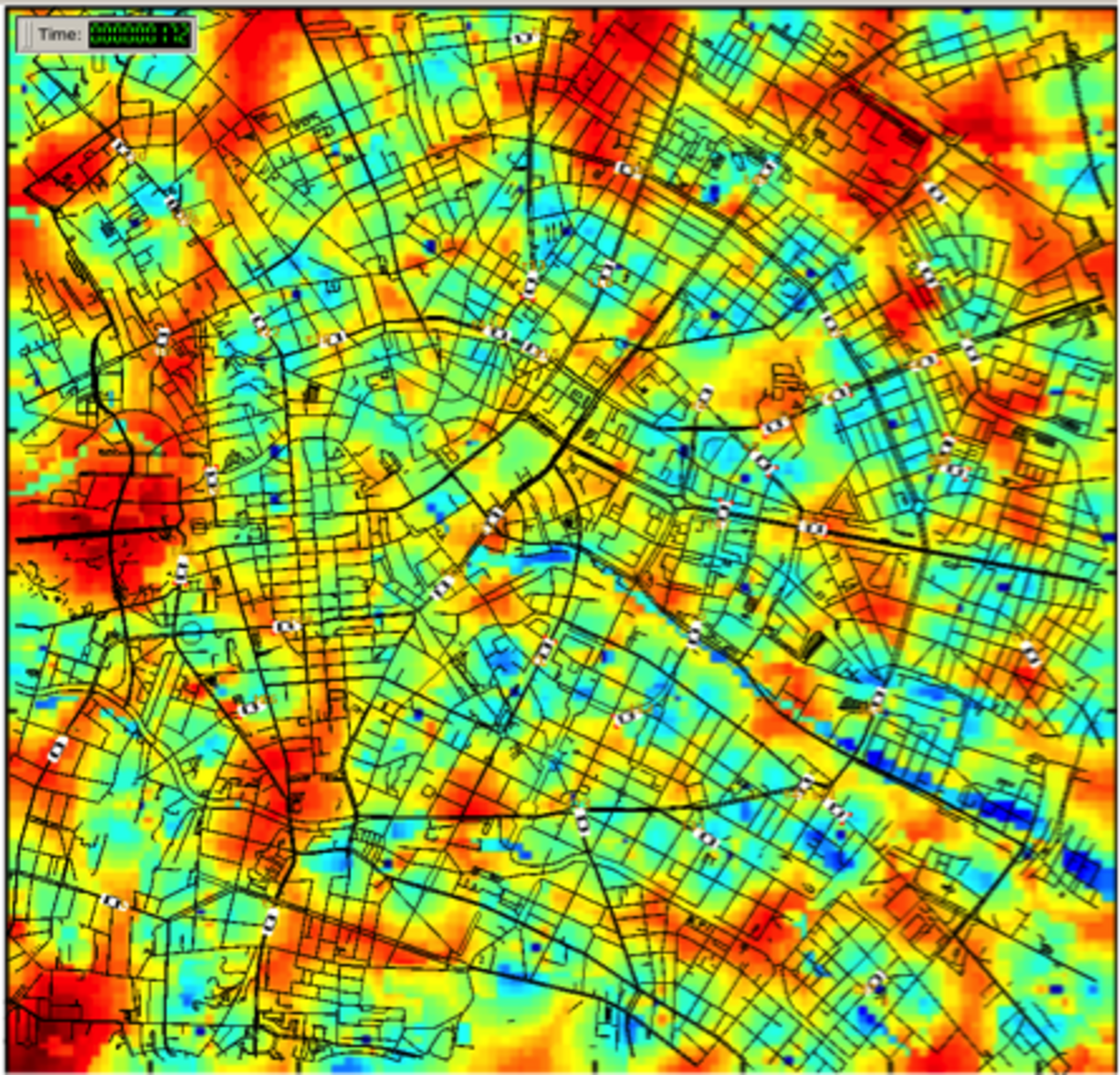
Figure A: Screenshot of simulation area illustrating street network and path-loss conditions. The simulations are used for the evaluation of candidate algorithms using realistic collection of data e.g. for the city of Berlin. User movement is simulated on real-world street networks and measurements of these users are then used to learn the underlying path-loss/radio maps.
Our research has focused on the development of online machine learning methods that also have low computational complexity. These features are particularly important because in live networks measurements keep arriving continuously, and they have to be processed in real time (online). One of the main challenges we have addressed is to design adaptive algorithms that, despite the lack of measurements in some areas, are able to provide accurate path-loss estimates when operating under real-time constraints and practical impairments.
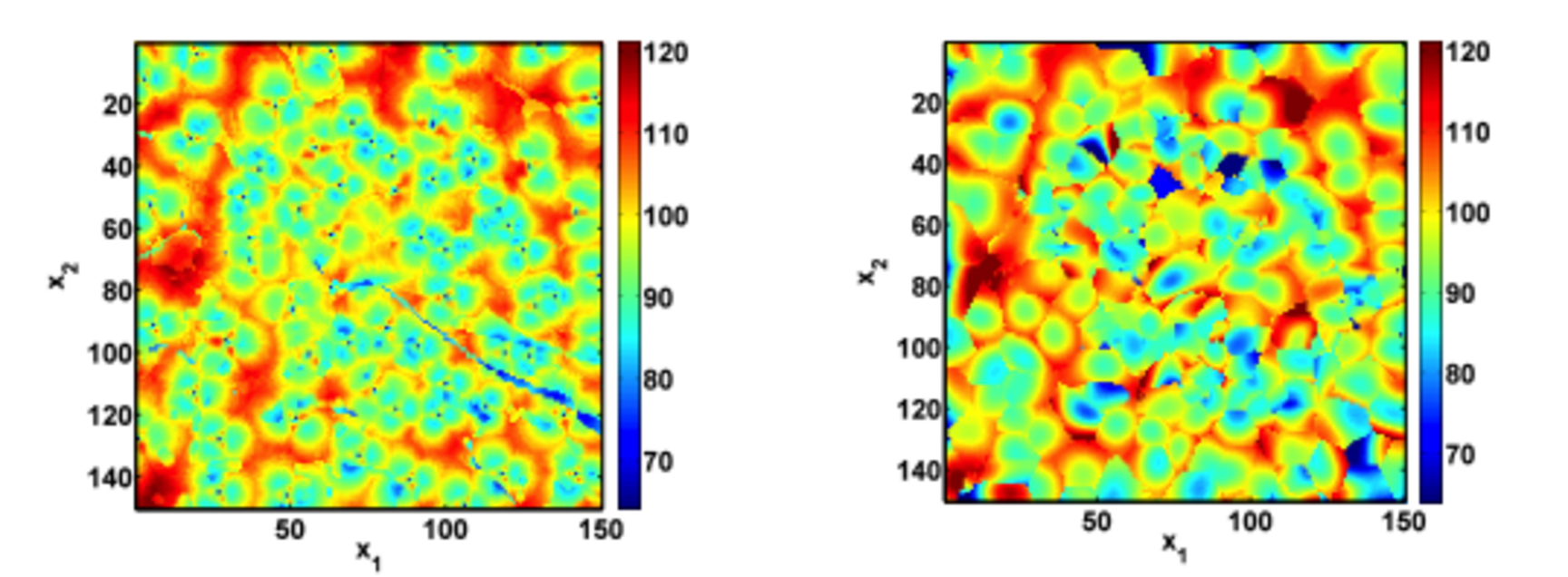
Figure B: Visualization of original (left) and online-learned (right) path-loss maps. Kernel-based algorithms are able to generate estimates of path-loss values that closely match the true ones
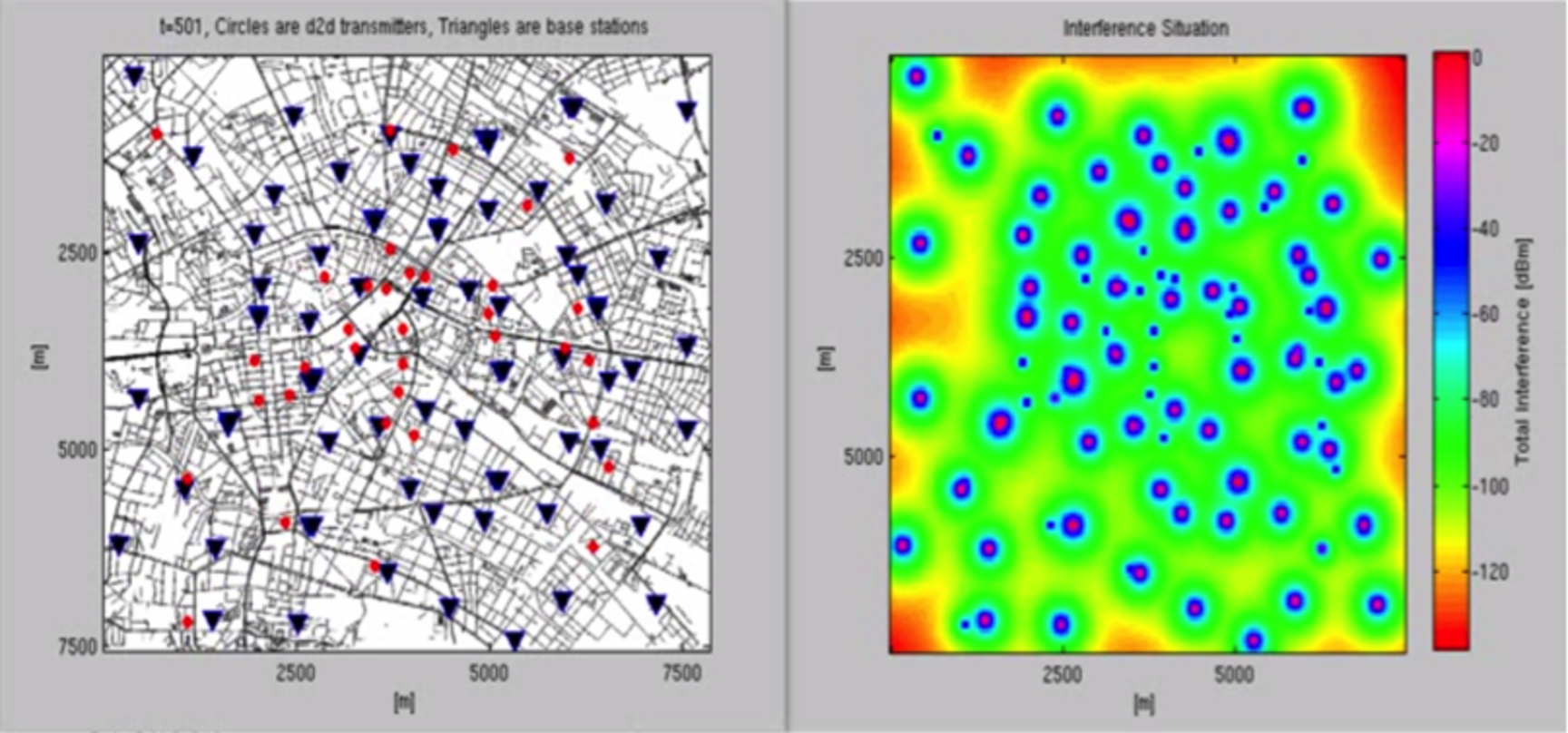
Figure C: Interference estimation to enable network-assisted device-to-device (D2D) communications. (D2D-)users move along a street grid (left) and the corresponding interference is estimated (right). The estimated interference can be used, e.g., to generate channel estimate for D2D pairs.
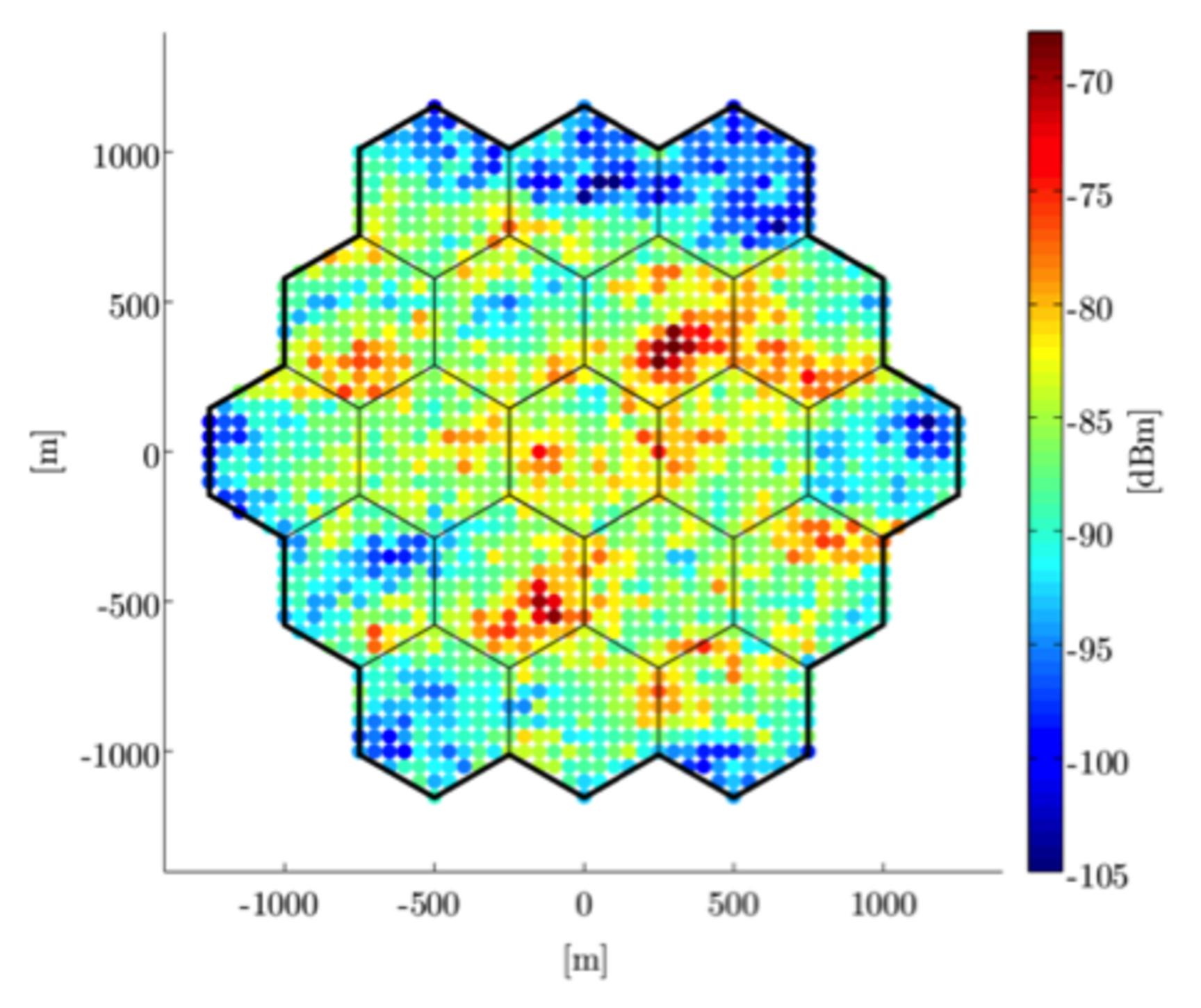
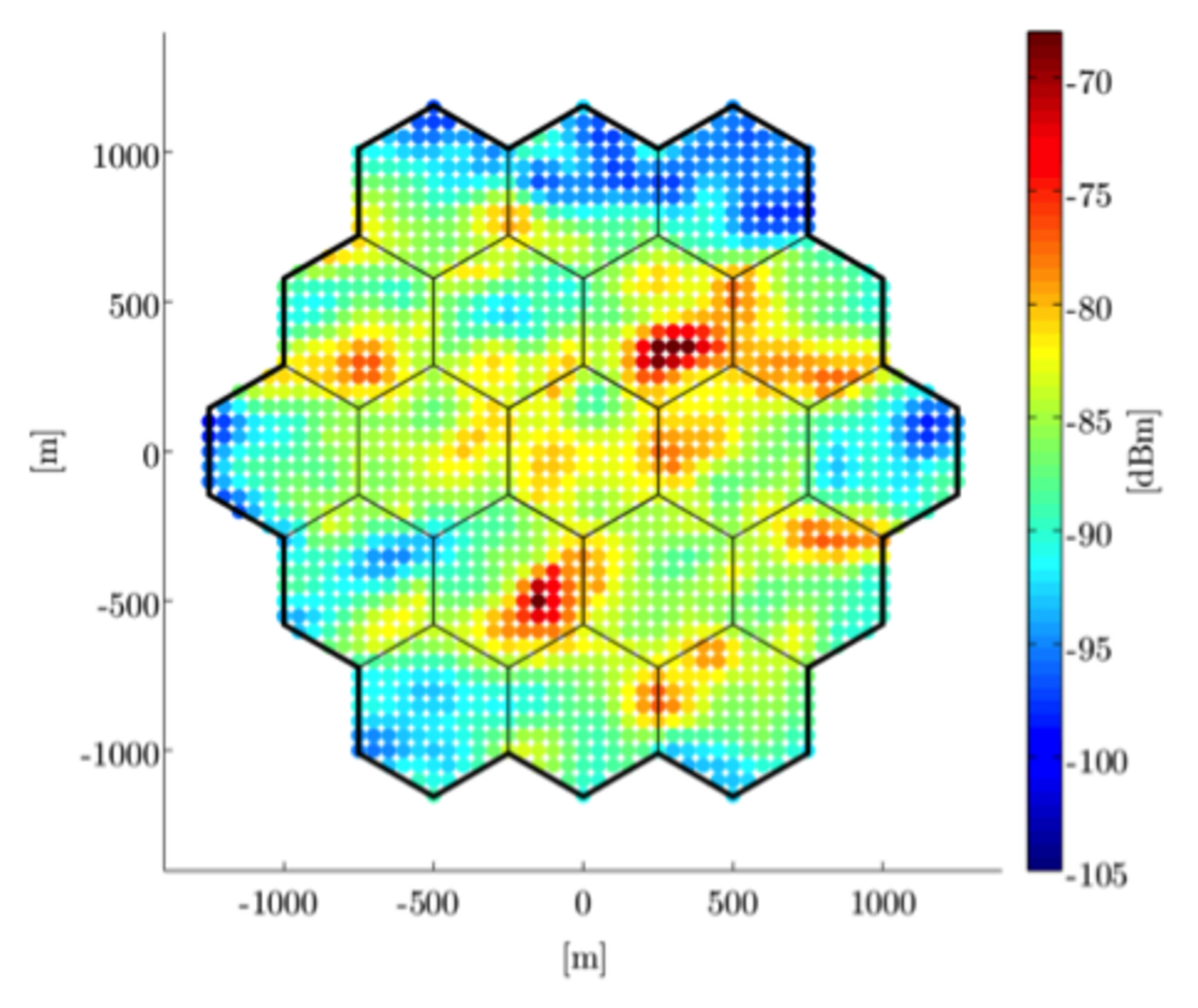
Figure D: Simulated downlink interference map (right) and the interference map reconstructed with the framework of Gaussian processes and the adaptive projected sub gradient method.